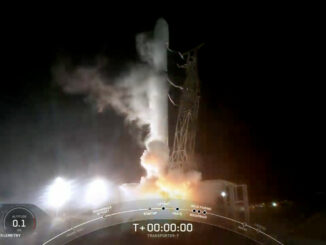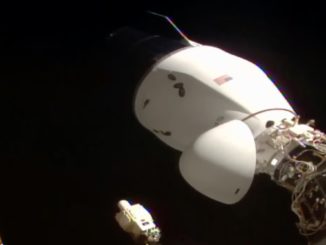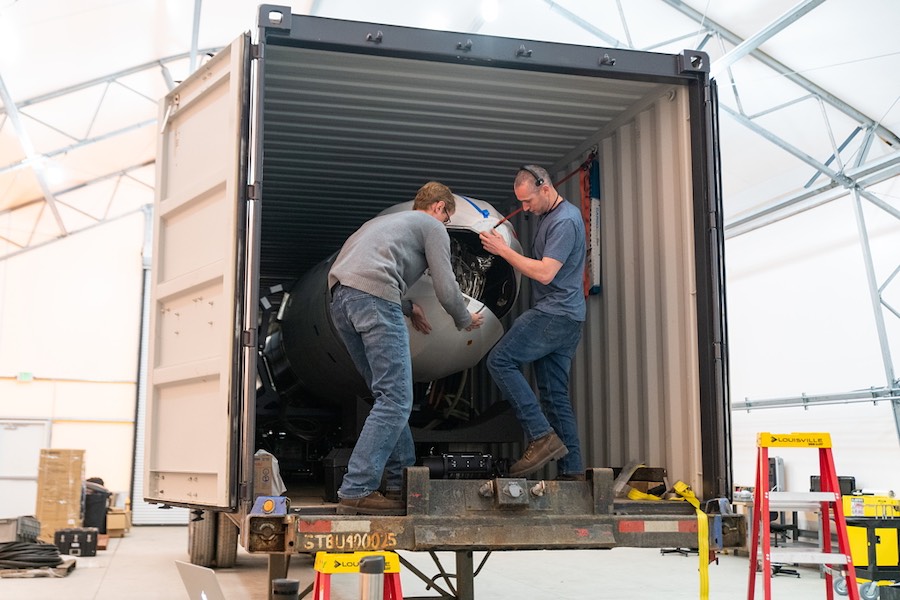
Some time in the next few days, a California-based company that has quietly toiled to develop a new light-class satellite launcher since 2016 will attempt to send three CubeSats into orbit from Kodiak Island, Alaska, on the first of two missions scheduled before the end of March to win up to $12 million in prize money from the U.S. military.
Astra, which operated in stealth mode until earlier this month, is gearing up to launch its first orbital mission as soon as this week. If it succeeds, and can follow up with another successful orbital launch in March, Astra stands to receive a prize of $12 million from the DARPA Launch Challenge, an initiative set up by the U.S. military research and development agency.
DARPA says it wants companies like Astra at the ready to deliver military payloads into orbit at low cost on short notice, giving commanders the ability to rapidly deploy orbiting assets or reconstitute communications and surveillance networks.
“Today, space launch is a process that begins years in advance, and it relies on a limited number of launch ranges that have complex, expensive, and one-of-a-kind, fixed infrastructure,” DARPA says on its website. “The DARPA Launch Challenge is stressing the time, technology, systems, and processes that currently constrain access to space.
“The Challenge aims to minimize launch infrastructure, improve responsiveness, and take advantage of advances in commercial launch cadence to demonstrate flexible launch capabilities in days rather than years, for our nation’s defense.”
“When we originally set up this challenge, it was set up largely to take advantage of the things that were happening in the commercial marketplace,” said Todd Master, a program manager in DARPA’s Tactical Technology Office. “We saw a bevy of really interesting companies who were doing interesting things, many of which seemed to have the possibility of meeting our goals of DARPA Launch Challenge, which were flexible and responsive. When I say flexible, I mean, launch from anywhere. When I say responsive, I mean launch on demand. Those are our goals to get to that one day we’d be able to do literally anywhere and literally anytime.”
A responsive, on-demand launch system has been on the U.S. military’s wish list for years. DARPA has sponsored several of the military’s efforts to support development of such a launch vehicle, with little success.
A flexible small satellite launcher would help the military with “things like battlefield reconnaissance, battle damage assessment, things that we use very tactically today,” Master said in a conference call with reporters Feb. 18. “We use those tactically when we have air dominance and air control. It gets a lot harder to do when we’re talking about protected airspace of over other countries or near adversaries who have capability to deny us that.
“I think you’ll see a lot more use of tactical communications for short duration missions in the future as the cost availability to do this … comes down,” Master said. “If you could imagine something like a special forces raid on a protected target behind enemy lines, the ability to proliferate a substantial amount of communications for for data … I think will be a strong need that we see, especially as we look at some of the things that we’ve looked at DARPA, from the perspective of what a (future) battlefield might look like. The ability to get data in and out of that is going to become really critical.”
DARPA’s Experimental Spaceplane Program, formerly known as the XS-1, effectively ended last month when Boeing pulled out of the partnership. DARPA had selected Boeing to lead development of a reusable hypersonic booster that could take off like a rocket, deploy an upper stage to send a payload into orbit, then return to Earth for a runway landing.
Another DARPA program — the Airborne Launch Assist Space Access, or ALASA, initiative — ended in 2015 without placing anything into orbit. Through the ALASA program, DARPA and Boeing aimed to develop an air-launched rocket that could place a small satellite in orbit after dropping from the belly of an F-15E fighter jet.
DARPA also supported the launch of the first two flights of SpaceX’s Falcon 1 rocket in 2006 and 2007. Both missions failed to reach orbit, and after finally achieving success with the Falcon 1, SpaceX terminated the program in favor of the larger Falcon 9 rocket.
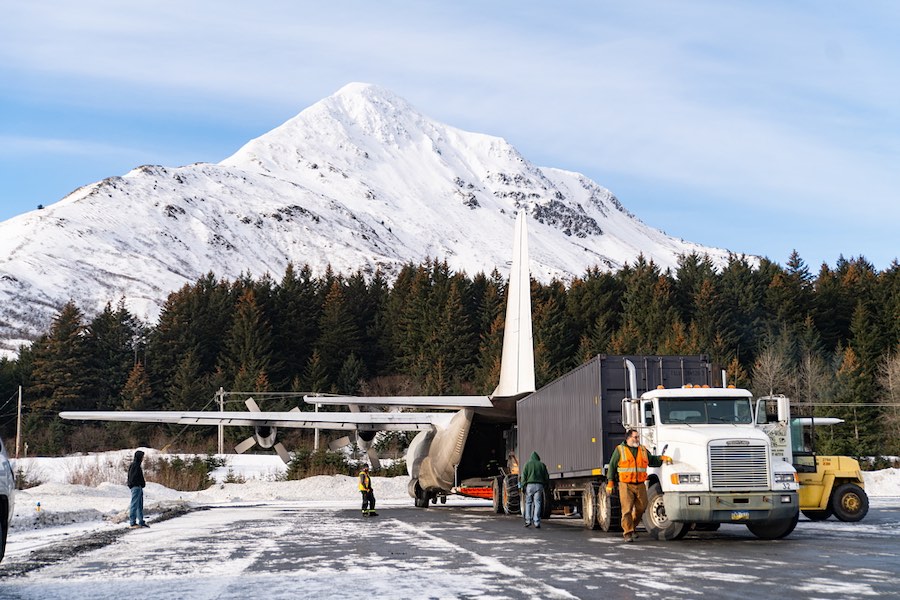
Officials announced the DARPA Launch Challenge in February 2018, and three companies qualified for the competition last year. But Vector Launch, one of the launch firms, ceased operations and filed for bankruptcy last year before ever conducting an orbital launch attempt. The other company, Virgin Orbit, withdrew from the DARPA Launch Challenge to focus on commercial missions, according to DARPA.
That left Astra, then operating in stealth mode, as the only company still vying for the prize. Earlier this month, Astra exited stealth mode with an exclusive feature story published by Bloomberg.
Astra has not offered an interview to Spaceflight Now despite multiple requests.
A successful launch of the first mission from Kodiak Island would net Astra $2 million in DARPA prize money. If the second mission succeeds by March 31, DARPA would pay out the remaining $10 million prize to Astra.
In a bid to test the flexibility of Astra, DARPA officials did not disclose the developers of the payloads for the first DARPA Launch Challenge mission until a month before launch, according to Master. The payloads were not delivered to Astra for integration with the rocket, which Astra has named “1 of 3” or “Rocket 3.0,” until less than a week before the planned liftoff date.
The second mission for the DARPA Launch Challenge has a 14-day launch window opening March 18, according to Master. The second mission will take off from a separate launch pad at Kodiak than Launch 1, but DARPA did not inform Astra of the launch site until Feb. 18, a month before opening of the launch window, in order to challenge the launch vehicle team.
Other sites under consideration for Launch 2 of the DARPA Launch Challenge included Wallops Island, Virginia.
A two-week launch window for Launch 1 opened Feb. 17 under the rules of DARPA’s Launch Challenge. Astra requested extra time to prepare the rocket and set a preliminary launch date of Tuesday, Feb. 25.
1of3 Arriving in Kodiak pic.twitter.com/J0g39VIdAg
— Astra (@Astra) February 24, 2020
Astra’s two-stage launch vehicle — already assembled at the company’s headquarters in Alameda, California — arrived on Kodiak Island aboard an air transport plane Feb. 18. The 38-foot-long (11.6-meter), 52-inch-wide (1.32-meter) launch vehicle fits inside a standard trailer, which was trucked from the airfield to the Pacific Spaceport Complex – Alaska on the southeastern flank of Kodiak Island to begin launch preparations.
“What you see when you start is basically a bare pad of concrete, with the idea that one day you could extend this to anywhere,” Master said. “So the team doesn’t get access to the actual facility to start doing preparations of their equipemtn or their vehicle until days before (launch).”
In the last week, a lean team of less than a dozen Astra engineers and technicians have unpacked the rocket and ground support equipment, including a mobile launch mount. Astra has also mated three CubeSats and a hosted payload to the rocket’s second stage.
DARPA said Monday the liftoff would be postponed from its planned launch date Tuesday due to a “major winter weather event” predicted to impact Kodiak Island. A new launch date “will be determined when conditions improve, and the launch countdown clock will be adjusted accordingly,” DARPA tweeted.
A countdown clock on DARPA’s Launch Challenge website was reset for a possible launch attempt Thursday. Airspace warning notices originally released for launch attempts Tuesday and Wednesday were deleted and replaced with warnings for possible launch attempts Thursday, Friday and Saturday.
The daily launch window opens at 3:30 p.m. EST (2030 GMT; 11:30 a.m. Alaska Standard Time) and extends three hours.
While the window for Launch 1 extends through March 1, Master said last week that officials will ensure Astra has at least four launch days with good weather available before closing the book on the DARPA Launch Challenge.
“So if we high winds for every single for the next two weeks, which I really hope we don’t have, we would give them additional time,” Master said.
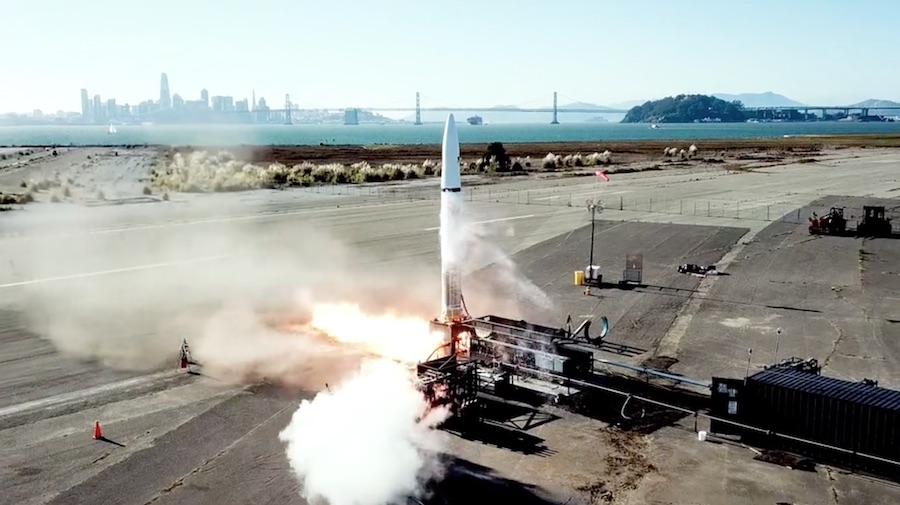
Founded in 2016, Astra is headquartered in Alameda, California, just across the bay from San Francisco. Chris Kemp, a Silicon Valley entrepreneur and former IT executive at NASA, established Astra in partnership with Adam London, who led a startup named Ventions focused on developing miniaturized rocket propulsion technologies.
“Our mission is to really focus on earth, and companies and governments and any project that helps make life on earth better, helps connect life on Earth, observe and influence our planet in a way that advances human interests and commerce,” Kemp said. “I think we’re really open to working with any government agency and/or commercial entity that has payloads that are focused on our planet.”
Astra’s first orbital-class launcher is on the small end of the burgeoning light-class satellite launch market.
“We have designed it to fit inside of a shipping container, and the payload performance to the orbit of this (mission) in its direct insertion mode, which is lower performing, is a little over 10 kilograms (22 pounds),” London said Feb. 18 in a conference call with reporters. The rocket is designed to do 25 kilograms (55 pounds) to sun-synchronous orbit.”
Other companies competing in the small satellite launch market are aiming to haul heavier payloads into orbit.
Rocket Lab, the only small launch firm with an operational booster, can deliver up to 330 pounds (150 kilograms) of payload to a 310-mile-high (500-kilometer) sun-synchronous polar orbit. Virgin Orbit, which once participated in the DARPA Launch Challenge, says its air-dropped LauncherOne vehicle will be able to carry up to 660 pounds (300 kilograms) to a similar sun-synchronous orbit when it begins flying later this year.
Other startup U.S. launch companies, such as Relativity Space and Firefly Aerospace, are working on rockets with heavier lift capacities. But they are still significantly smaller than rockets owned by entrenched launch companies like SpaceX and United Launch Alliance.
Numerous other launch startups in the United States, Europe and China are also developing privately-owned vehicles to loft small payloads into orbit for a range of commercial and military customers.
While the diminutive dimensions of Astra’s launcher stand out among competitors, it wouldn’t be the smallest rocket to reach orbit. That distinction goes to the Japanese SS-520-5 launcher — a modified solid-fueled sounding rocket — which injected a CubeSat into orbit in 2018 in a one-off demonstration of Japan’s small satellite launch capability.
Astra’s first orbital rocket is powered by five kerosene-fueled first stage engines. A single engine is mounted to the rocket’s second stage.
Prototypes of the launcher flew two times on suborbital missions from Kodiak in 2018. The Federal Aviation Administration classified the flights as mishaps, but on Astra’s website, the company writes that both rockets launched successfully, while acknowledging that the second flight was “shorter than planned.”
Lessons from the suborbital missions were incorporated into Rocket 3.0, the company’s first orbit-capable launcher, according to Astra.
“We’ve done a lot of testing already back here in California with the upper stage and the first stage doing full-duration hotfire tests,” Kemp said. “But the thing that we haven’t done and that we will do on a very public stage is put the entire system together and do the ultimate test, where literally everything has to work perfectly for us to achieve the objectives of this challenge.”
New rockets have often required several launch attempts before successfully achieving orbit.
“From our company’s perspective, it is a campaign of launches that will result in a successful orbit, not this first launch,” Kemp said. “This first launch will deliver to DARPA a system capable of being moved around the country and launching small, affordable agile payloads into earth orbit. But from our company’s perspective, it’s the first of a series of launches, where we will achieve orbit.
“What we will do up in Kodiak is we will test this entire system — the launcher, the rocket, the software and everything at the range — as a fully integrated suite of hardware and software for the very first time,” Kemp said.
Investors have supplied more than $100 million to fund development of Astra’s rockets and a 250,000-square-foot launch vehicle factory in California, Bloomberg reported earlier this month.
That’s significantly more than the $12 million up for grabs in the DARPA Launch Challenge.
“Typically, a challenge is not a fantastic mechanism for cost recovery,” Master said. “It’s not intended to be (where) you win this thing, and you’re going to make money on this event. I don’t think in most of our other prior challenges, you would see that any team probably came out necessarily in the black as a direct result of their prize money.
“The … incentives that we were hoping our teams would see when they entered was that you may have to invest a little to win this challenge, but once you do, you’re going to highlight yourself as as solely capable or uniquely capable,” Master said.
In the Feb. 18 conference call, Kemp tempered expectations that Astra’s first orbital launch attempt might be 100 percent successful.
“We would be delighted, but are not expecting to fully achieve all of the objectives here,” Kemp said. “But the nation now has a completely portable launch system, and we are capable of, and will over the months ahead, launch and launch and launch again, potentially from different sites.
“Now we have the capability that DARPA wanted to see America challenged with creating, and I think to some degree taxpayers have already won because we’ve developed a system that will work,” Kemp said. “And we’re really excited to have the opportunity to compete.”
Master said the DARPA Launch Challenge was set up to be different from a typical military launch contract solicitation.
“While we’re extremely excited about having a team that that we’re hopeful is capable of completing this challenge — and we think that Astra’s approach seems like it’s viable — part of the goal setting us up as a challenge was was not having necessarily a preferred provider or preferred approach,” Master said.
In a typical procurement, DARPA or other military agencies might issue a request for proposals to ask for bids from contractors.
“And we award and manage a contract with those providers,” Master said. “In the case of the challenge, we basically set … goals and it’s really left to the team to decide how they’re going to accomplish those. It takes us a little bit out of the driver’s seat, which for an engineer is hard sometimes because you don’t have the specific insight.
“But we really are trying to say, while we’re hopeful for Astra and we would like to accomplish our goals … it’s not necessarily the only approach or DARPA’s preferred approach. But it is the one that is is most likely to accomplish the challenge in in the near-term here.”
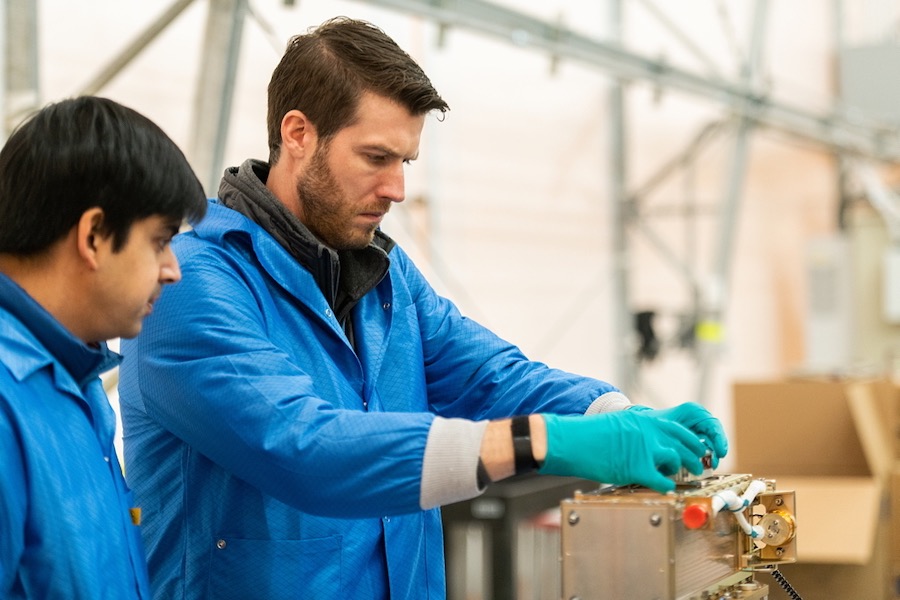
DARPA revealed last week the payloads slated to fly on the first DARPA Launch Challenge mission.
One Prometheus CubeSat developed by Los Alamos National Laboratory for the Department of Defense will fly on Astra’s rocket. A series of Prometheus CubeSats have launched on previous missions, and the shoebox-sized Prometheus nanosatellite launching from Kodiak will demonstrate capabilities aimed at “reducing tasking and data dissemination timelines to provide military operators with tactically relevant information.”
Two identical CubeSats from the University of South Florida will also launch on a mission named ARCE-1.
The twin CubeSats “will fly together in the same orbit and perform inter-satellite networked communications and a high degree of system autonomy,” according to DARPA.
“Through ARCE-1, the University of South Florida aims to demonstrate the algorithms and hardware systems necessary to support large constellations of LEO (Low Earth Orbit) satellites that will intelligently reconfigure around different tasks, gracefully handle faulty and failed satellites, and operate with a minimum of oversight from Earth-based operators,” officials wrote on DARPA’s website.
There’s also a miniature radio beacon that will remain attached to the Astra rocket’s second stage once in orbit. The Space Object Automated Reporting Systems, or SOARS, transmitter from Tiger Innovations will allow engineers to improve orbit tracking and space situational awareness.
Astra will attempt to place the payloads into an orbit roughly 276 miles (445 kilometers) in altitude, with an inclination of 97.2 degrees to the equator, according to Master.
“While we would like them to achieve that target orbit — ultimately customers want to achieve a target orbit — our success criterium from the challenge is achieving orbit,” Master said. “For the purpose of the challenge, we’ve defined orbit as a 250-kilometer (155-mile) circular orbit, which may sound low to some, but from a future military tactical use case would still show some benefit.
“We believe if a team is able to achieve orbit successfully through a series of first stage, second stage, payload separation, etc., that you have really accomplished the technical goals that we have set forth, and performance improvements can follow,” he said.
Assuming the first mission of the DARPA Launch Challenge reaches orbit, Astra will try to launch a second rocket with another set of nanosatellite payloads in the second half of March. The window for Launch 2 at Pacific Spaceport Complex – Alaska opens March 18, according to DARPA.
“To win this challenge, we have to be prepared in a few weeks to have another rocket,” Kemp said. “So the silent heroes are the teams back here in the Bay Area that are producing rockets. So we have a rocket factory that is producing rockets at about a rate of one per month, and we have another rocket 90 percent complete. And as we either succeed or as we learn — either outcome is fine for us — from this first launch, we will either make changes, or test and ship another rocket and launch again here in the next month or two.
“And we will keep doing that,” Kemp said. “I think without this contest, and without this challenge, this might have taken longer, and it certainly might not have been as possible for us to show up anywhere in the country with this capability.”
The rules of the DARPA Launch Challenge originally stipulated that the second flight must take off from a different launch site than Launch 1. Other launch sites under consideration by DARPA included Vandenberg Air Force Base and San Nicolas Island in California, and Wallops Island, Virginia.
In the end, DARPA directed Astra to ready for Launch 2 at a separate launch pad at Kodiak around 1,000 feet (300 meters) from the pad to be used for Launch 1.
“Our team will accomplish Launch 1 from one of those with the trajectory we’ve given them and payload that we’ve given them,” Master said. “If they’re successful, they will have to recalculate a new trajectory from a new pad with a different payload.
“The reason why we opted to do this (was) once we looked at it, we really didn’t want to make this a logistics challenge or a regulatory challenge,” Master said. “Whether we moved 5,000 miles or 1,000 feet, the technical challenges associated with it and the benefit to what we are trying to demonstrate from a goals standpoint remain the same.”
DARPA officials said they carefully considered staging Launch 2 from NASA’s Wallops Flight Facility on Virginia’s Eastern Shore. But the launch range at Wallops is busier than Kodiak, with launch pads in use early this year by Northrop Grumman’s Antares and Minotaur rockets.
A new launch pad at Wallops for Rocket Lab, a competitor of Astra in the small launch market, is also undergoing final testing before the Rocket Lab’s first mission from Virginia in the coming months.
Public safety at Wallops, which lies closer to populated areas than the launch complex on Kodiak Island, Alaska, was also a concern, Master said.
Pam Underwood, manager of operations and integration at the FAA’s Office of Commercial Space Transportation, said the federal regulatory agency will need to approve a separate license request from Astra for Launch 2 because it will take off from a separate launch pad at Kodiak and follow a different trajectory into space.
An FAA license for Launch 1 has already been approved, officials said.
With Astra’s launch from Kodiak Island, Alaska, Master said officials will experiment with techniques to reduce the impact of space launches on air traffic.
“Knowing in the future that we want to use space launch much more frequently. air traffic integration becomes an increasing challenge with that,” Master said. “Today, the way we treat it is generally space launches are treated as a national event, and we close lots and lots of air traffic corridors
“At a time when we do launches a dozen times a year, something like that is still trackable, but once we start to expand to hundreds of launches a year, that approach is no longer going to work,” he said. “So we identified pretty early on that we were going to have some challenges with that and wanted to put in place any early fixes that we could.”
The Space Data Integrator aims to incorporate data from launch and re-entry vehicles into operational air traffic management systems, allowing the FAA to track trajectories of launches and re-entry operations an the status of mission events, according to an FAA fact sheet on the project.
The FAA first activated the Space Data Integrator in “shadow mode” for a suborbital Blue Origin launch in 2018.
“This is where we start to integrate real-time data of launches into the broader air traffic control system and allow us to feed that information back to the FAA and then dynamically control the windows while maintaining safety,” said Mark Lester, president and CEO of Alaska Aerospace, which owns and operates the Pacific Spaceport Complex – Alaska. “While we don’t have the congestion that the East Coast has, we do have trans-Pacific flights we need to be mindful of, and the local air carriers as well. So it’s exciting to integrate all this together as we increase our ops tempo.”
Email the author.
Follow Stephen Clark on Twitter: @StephenClark1.

